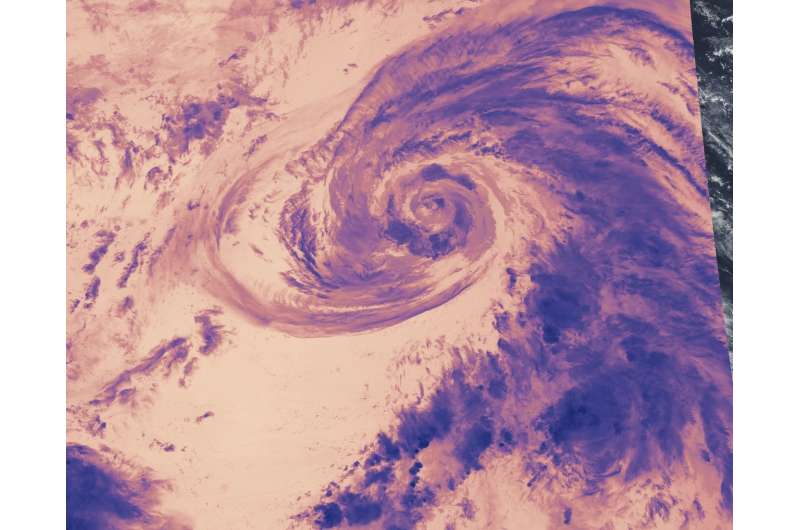NASA examines brightness temperatures of Tropical Cyclone 15W

Brightness temperatures are one of the things that scientists look at when analyzing a tropical cyclone. NASA-NOAA's Suomi NPP satellite provided a view of Tropical Cyclone 15W using brightness temperatures that helped show where the strongest storms were occurring within 15W.
The Visible Infrared Imaging Radiometer Suite (VIIRS) instrument aboard NASA-NOAA's Suomi NPP satellite provided a look at the temperatures of 15W's cloud tops on July 24. It showed some strong thunderstorms wrapped tightly around the low-level center and in a large band extending from the north to the eastern quadrant of the storm where cloud tops were as cold as 216.5 kelvin (minus 70.3 Fahrenheit/minus 56.8 Celsius).
At 11 a.m. EDT (1500 UTC) on July 24, the Joint Typhoon Warning Center or JTWC noted that Tropical Depression 15W.was located near 19.8 degrees north latitude and 137.2 degrees east longitude. That's about 376 nautical miles southwest of Iwo To Island, Japan.15W had maximum sustained winds near 30 knots (34.5 mph/55.5kph) and was moving to the north.
The Joint Typhoon Warning Center forecast said 15W will move north, later northeast and is expected to intensify to 90 knots over the next three days, before gradually weakening. The typhoon is expected to make landfall near Tokyo on July 29.
Provided by NASA's Goddard Space Flight Center




















